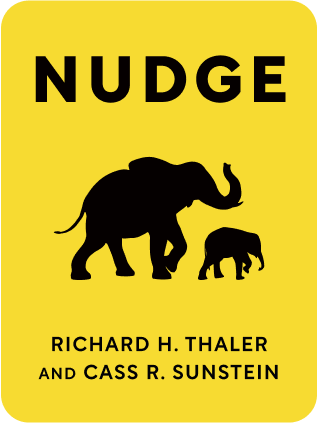

This article is an excerpt from the Shortform summary of "Nudge" by Richard H. Thaler and Cass R. Sunstein. Shortform has the world's best summaries of books you should be reading.
Like this article? Sign up for a free trial here .
What are heuristics and biases? Are there common heuristics most people use?
Heuristics and biases are rules of thumb or cognitive shortcuts people use. Instead of thinking carefully about every trivial choice, common heuristics help with efficiency.
Read more about heuristics and biases in everyday life.
Use of Heuristics and Biases
Heuristics are, essentially, rules of thumb; and while they can often aid us in making decisions, they can also lead us astray.
A particularly dangerous one of the common heuristics, identified by the behavioral economists Daniel Kahneman and Amos Tversky, is the “representativeness” heuristic. When we make decisions based on “representativeness,” we take either a stereotype of something or its past condition as an indication of its future. For example, if the stock market is booming, we might rush to invest, forgetting that the market is prone to fluctuations. It can be a dangerous cognitive shortcut.
Loss Aversion, Inertia, and Status Quo Heuristics and Biases
Numerous studies have shown that humans are more afraid of suffering a loss than happy about realizing a gain, a habit of thinking that freezes us in our current situation (the status quo). This is another one of the heuristics and biases to watch for. A classic example is how workers decide on the allocation of their 401(k)s. Most workers will either set their allocation once and forget about it, or they’ll opt for the default, even when these allocations aren’t suitable for their age and retirement goals.
Temptation and/or Mindlessness
To understand temptation, we must recognize that we vacillate between “hot” and “cold” states. When we’re in a “hot” state—for example, when we’re thirsty—we’re highly susceptible to certain stimuli (for example, a soda vending machine). When we’re in a “cold” state—for example, well hydrated from our reusable water bottle—we’re less susceptible to those stimuli. A temptation is something we consume more of when we’re in a hot state.
Temptation often strikes us in relation to food, as does mindlessness. When we’re performing an action “mindlessly,” we’re acting on autopilot, without thinking. Studies have shown that the more popcorn people are given—even if the popcorn is stale!—the more they’ll eat, simply because consuming popcorn is such a routine action. This cognitive shortcut is dangerous.
Social Influence
Whereas an Econ only takes into account the choices in front of him or her, without considering what other Econs are doing, a Human is heavily influenced by his or her peers. Studies on music tastes, for example, have shown that a song’s popularity is self-perpetuating—in other words, its popularity has more to do with social approval than any intrinsic musical factor.
Libertarian Paternalism, Choice Architecture, and Nudges
Given Humans’ innate aversion to loss and status quo bias, we are prone to accept the default option when faced with a complex or high-stakes choice—for example, the amount we contribute to our retirement plan or the mortgage terms we agree to. Unfortunately, all too often defaults due to heuristics and biases are afterthoughts. Many choice architects concentrate their efforts on offering more—and more various—choices, expecting people to take advantage of their freedom to choose.
A straightforward way for choice architects to improve people’s choices is to (1) always offer a default option and (2) make sure the default is carefully designed to maximize the chooser’s benefit.
Sweden’s privatization of its social-security program provides a case study in the importance of defaults. The designers of the plan offered a carefully designed default fund, but they also presented citizens with dozens of additional choices and actively encouraged people not to opt for the default. As one would expect, a significant segment of the population—1/3—ended up investing in the default fund. But the majority of Swedes, who weren’t necessarily financially literate, chose their own funds—to their own detriment. The default fund outperformed the individually chosen funds by anywhere from 10%–15%. In this example, the Swedish government gave the right nudge in offering a thoughtful default (but they undermined that nudge by encouraging people not to choose the default).
Another thoughtful use of defaults concerns binary choices, where one must opt in or out of certain programs or situations. Often, a simple change in the default—from “opt-in” to “opt-out” or vice versa—has significant beneficial effects. It takes advantage of heuristics and biases. For example, making enrollment, rather than non-enrollment, the default in a retirement plan vastly increases the number of people saving for their golden years.

———End of Preview———
Like what you just read? Read the rest of the world's best summary of Richard H. Thaler and Cass R. Sunstein's "Nudge" at Shortform .
Here's what you'll find in our full Nudge summary :
- Why subtle changes, like switching the order of two choices, can dramatically change your response
- How to increase the organ donation rate by over 50% through one simple change
- The best way for society to balance individual freedom with social welfare






